Related Research Articles
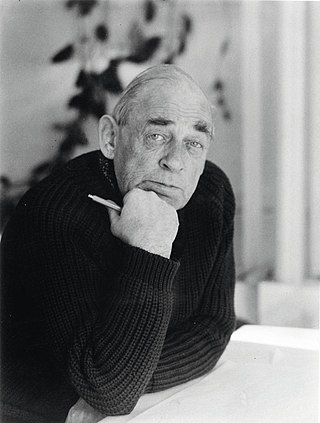
Hugo Alvar Henrik Aalto was a Finnish architect and designer. His work includes architecture, furniture, textiles and glassware, as well as sculptures and paintings. He never regarded himself as an artist, seeing painting and sculpture as "branches of the tree whose trunk is architecture." Aalto's early career ran in parallel with the rapid economic growth and industrialization of Finland during the first half of the 20th century. Many of his clients were industrialists, among them the Ahlström-Gullichsen family, who became his patrons. The span of his career, from the 1920s to the 1970s, is reflected in the styles of his work, ranging from Nordic Classicism of the early work, to a rational International Style Modernism during the 1930s to a more organic modernist style from the 1940s onwards.

Alajärvi is a town and municipality of Finland. It is located in the South Ostrobothnia region. The town has a population of 9,084 and covers an area of 1,056.74 square kilometres (408.01 sq mi) of which 47.99 km2 (18.53 sq mi) is water. The population density is 9.01 inhabitants per square kilometre (23.3/sq mi). The town is unilingually Finnish.
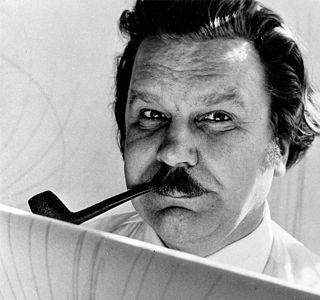
Tapio Veli Ilmari Wirkkala was a Finnish designer and sculptor, a major figure of post-war design.

Timo Tapani Sarpaneva was an influential Finnish designer, sculptor, and educator best known in the art world for innovative work in glass, which often merged attributes of display art objects with utilitarian designations. While glass remained his most commonly addressed medium, he worked with metal, wood, textiles, and porcelain (china). Sarpaneva has entered homes around the world through his industrial design of upscale, artistically conceived items, including cast-iron cookware and porcelain dinnerware. His work was among the key components that helped to launch Finland's reputation as a trailblazer of design.

Arabia was a Finnish ceramics company, founded in 1873 by Rörstrand, now owned by Fiskars. Arabia has specialized in faience and porcelain kitchenware and tableware.

Aino Maria Marsio-Aalto was a Finnish architect and a pioneer of Scandinavian design. She is known as the design partner of architect Alvar Aalto, with whom she worked for 25 years, and as a co-founder with him, Maire Gullichsen, and Nils-Gustav Hahl of the design company Artek, collaborating on many its most well-known designs. As Artek's first artistic director, her creative output spanned textiles, lamps, glassware, and buildings. Her work is in the permanent collection of the Museum of Modern Art (MoMA) in New York, and MoMA has included her work in nine exhibitions, the first of which was Aalto: Architecture and Furniture in 1938. Other major exhibitions were at the Barbican Art Gallery in London and Chelsea Space in London. Aino Aalto has been exhibited with Pablo Picasso.

Artek is a Finnish furniture company. It was founded in December 1935 by architect Alvar Aalto and his wife Aino Aalto, visual arts promoter Maire Gullichsen and art historian Nils-Gustav Hahl. The founders chose a non-Finnish name: the neologism Artek was meant to manifest the desire to combine art and technology. This echoed a main idea of the International Style movement, especially the Bauhaus, to emphasize the technical expertise in production and quality of materials, instead of historical-based, eclectic or frivolous ornamentation.
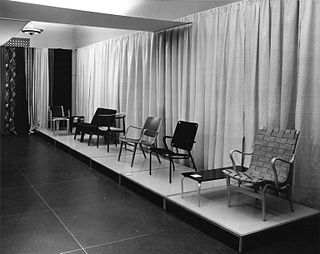
Scandinavian design is a design movement characterized by simplicity, minimalism and functionality that emerged in the early 20th century, and subsequently flourished in the 1950s throughout the five Nordic countries: Denmark, Finland, Norway, Sweden, and Iceland.

Iittala, founded as a glassworks in 1881, is a Finnish design brand specialising in design objects, tableware and cookware.
Ravenhead Glass was a glassworks near Ravenhead Colliery, Lancashire, North West England. It was founded in 1850 by Frances Dixon and John Merson after a move from their earlier (1842) factory at Thatto Heath near St Helens. In 1852, this factory was sold to the Pilkington Brothers and Frances Dixon then acquired a 13-acre (53,000 m2) site at Ravenhead, building a new gas-powered glassworks.
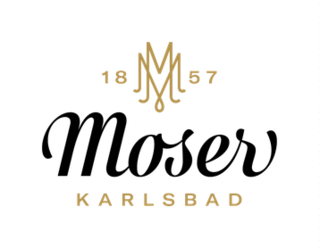
Moser a.s. is a luxury glass manufacturer based in Karlovy Vary, Czech Republic. The company is known for manufacturing stemware, decorative glassware, glass gifts and various art engravings. Moser is one of the most collected of 20th century decorative glass and has been used everywhere from palaces to local restaurants. From its beginnings in 1857, as a polishing and glass engraving workshop, it developed into a lead-free glass manufacturer lasting through the 20th century until the present. It is considered as the most luxurious Czech brand as well as one of the world's most famous brands of luxury crystal. Every piece of glass that is made by Moser is hand made.
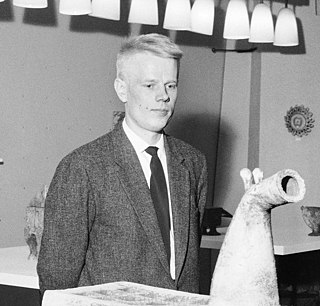
Oiva Kalervo Toikka was a Finnish glass designer, best known for his designs for Iittala.

Carin Lisa Johansson-Pape née Johansson was a Finnish designer, best known for her work in lighting. She was the most significant Finnish lighting designer in the second half of the 1900s. Her priorities were first about the functions then the design.
Hans Göran Andreas Hongell, son of Hilda Hongell was a Finnish designer, best known for his work with glass. After studying decorative painting Göran Hongell and a fellow student Gunnar Forsström established a decorative painting studio that designed posters and painted decorations for public areas. In 1932 Hongell was hired as a designer by Karhula-Iittala. His position became permanent in 1940. Hongell was the first designer to be hired by a Finnish glassworks.
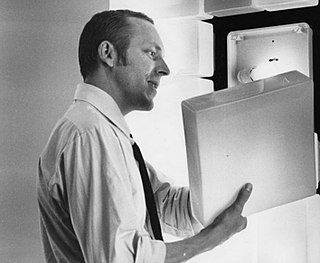
Valto Kokko studied at the Free Art School of Unto Pusa and the metal arts department of the Institute of Industrial Arts, in Finland, from 1958 till 1961.

The Alvar Aalto Museum is a Finnish museum operating in two cities, Jyväskylä and Helsinki, in two locations each, dedicated to architect and designer Alvar Aalto. All four locations are open to the public. They are:
Nathalie Lahdenmäki is Finnish ceramic artist and designer of French origins with a studio in Espoo, Finland.
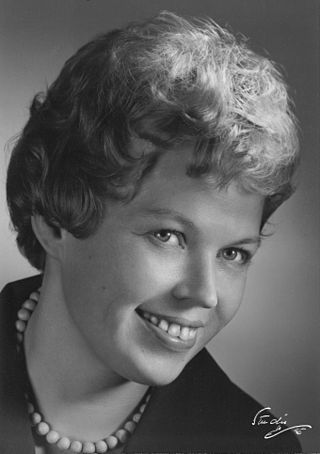
Kaija Helena Aarikka-Ruokonen was a Finnish designer and entrepreneur.
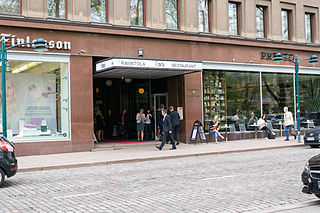
Savoy is a restaurant in Helsinki, Finland, located on the Eteläesplanadi street. The restaurant opened on 3 June 1937. It is located in a space designed by Finnish architects Aino and Alvar Aalto, and furnished by the company Artek, which they had founded two years earlier. It was renovated in 2019. The Savoy is considered a hallmark of Finnish cuisine.

The Edgar J. Kaufmann Conference Center is a conference hall on the 12th floor of 809 United Nations Plaza in the Turtle Bay neighborhood of Manhattan in New York City. Designed by Finnish architect Alvar Aalto for professor Edgar Kaufmann Jr., it is one of four remaining designs by Aalto in the United States. The conference center was announced in 1962, during the construction of the Institute of International Education (IIE)'s headquarters, and was dedicated in December 1964. After the building was sold in 1998 to a group backed by Japanese financiers, there were several unsuccessful attempts to preserve the conference center as a New York City designated landmark.
References
- ↑ Mara Vorhees (2 November 2012). "An Alvar Aalto tour of Finland". BBC Travel, Lonely Planet. Retrieved 22 December 2013.
His curvaceous Savoy vase is still an icon of Finnish design 75 years after its creation. But these internationally known pieces are not the basis for Aalto's title as the father of Modernism.
- ↑ Hauffe, Thomas (1996). Design. Oslo: Cappelen. p. 126. ISBN 9788202159863.
"Vasen vant internasjonal berømmelse etter krigen, ..." (The vase won international fame after the war ..)
- 1 2 "Eskimonaisen nahkahousut eli Savoy-maljakko täyttää 70 vuotta". formin.finland.fi (in Finnish). Archived from the original on 8 July 2012. Retrieved 19 December 2011.
- ↑ "Alvar Aalto's Savoy Vase Continues to Inspire Designers". Finnish Design Blog. Archived from the original on 22 January 2012. Retrieved 19 December 2011.
- ↑ "Ceramics". Icon . April 2005. Archived from the original on 13 January 2012. Retrieved 19 December 2011.
- ↑ "The Identity & Para Identity of Tobi Wong". Guy Keulemans: design research and objects. Retrieved 19 December 2011.
Further reading
- Alvar Aalto: The Complete Catalogue of Architecture, Design and Art. Göran Schildt. New York: Rizzoli International, 1994.